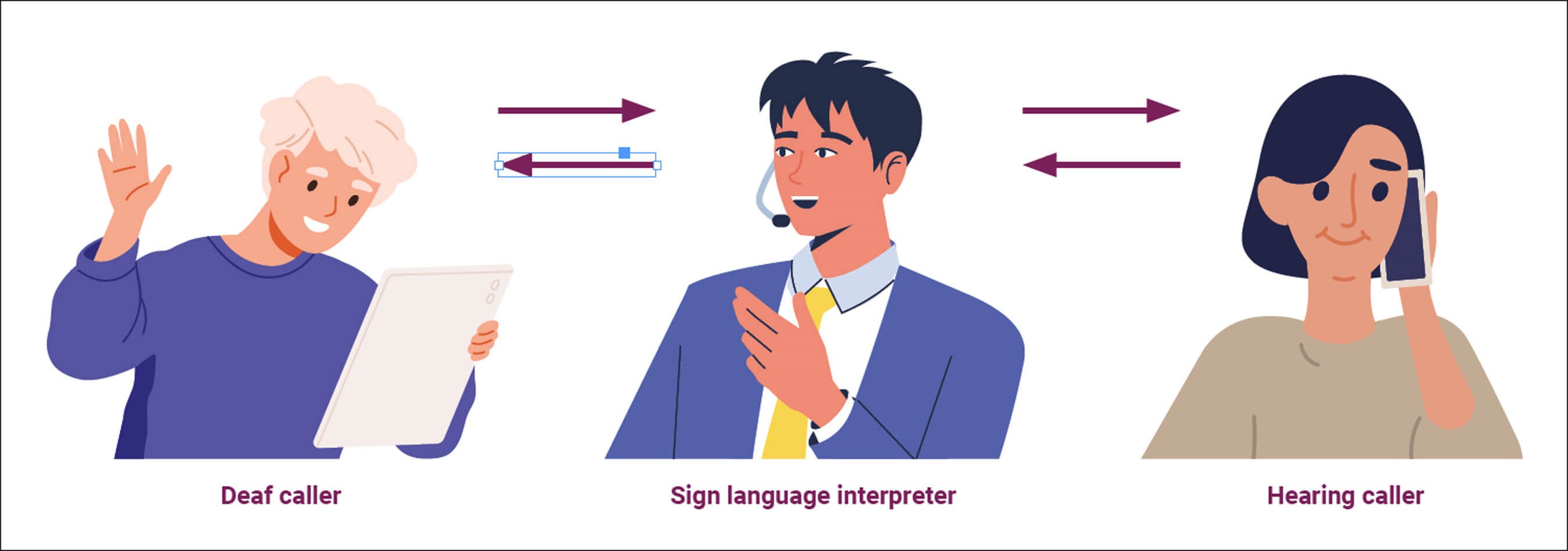Deaf and hard-of-hearing communities experience many barriers when trying to communicate online or on the phone. Individuals encounter limitations communicating virtually with family members, booking crucial appointments and speaking to friends, to name a few. However, video relay service (VRS) technologies were designed to fill this void and put an end to these communication challenges.
VRS is a technology that is available in many countries worldwide and provides a wonderful experience to patients through multilingual services.VRS uses a video connection through a TV or a computer to begin interpretation. Deaf and hard-of-hearing individuals can communicate with a hearing individual through a sign-language interpreter. The use of VRS is straightforward and will provide a secure and speedy service for Deaf and hard-of-hearing individuals who know sign-language. Having to rely on lip reading or reading text to communicate is no longer needed.

There are countless benefits to VRS, however, the most outstanding benefit is that it is a fast and effective communication service. Not only does VRS provide high-priority communication services for the purpose of interacting with family members and loved ones, they also provide communication during emergencies. Patients dialling into VRS for an emergency are considered priority and placed quickly through to emergency services for assistance.
Many audiologists spend most of their practice assessing, rehabilitating and preventing hearing loss. However, when Deaf and hard-of-hearing individuals come through our doors, or we see an individual with progressive hearing loss who cannot be helped with traditional amplification (for example, an individual with neurofibromatosis 2), we often are at a loss as to what type of resources we can provide. Using VRS in our practice to help ease communication between clinicians and patients, as well as providing VRS as a resource to these individuals, give us some additional tools to help.
Although there are many considerable gains through the use of VRS, there are also some limitations. Only individuals who have sign language knowledge are able to use this online video software. However, for those who do not know sign language, perhaps lipreading using video calls will be beneficial enough.
Another potential limitation is that each country that has VRS has different sign-up requirements, regulations and fees. Some countries started using VRS for the workplace only but have recognised the benefit to everyday life and are expanding services. Other countries started VRS with limited hours of operations and, noticing the benefit, expanded to 24 hours per day. Unfortunately, this is not a service that is offered by every country worldwide. There are prominent video relay services in much of Europe (United Kingdom, Germany, France, etc) as well as in North America (Canada and the United States). However, more advocacy is needed to bring this much needed service to other parts of the world.
VRS seems to be a robust video communication tool for Deaf and hard-of-hearing individuals. We expect there will be significant uptake and benefit as it becomes more widely available.






